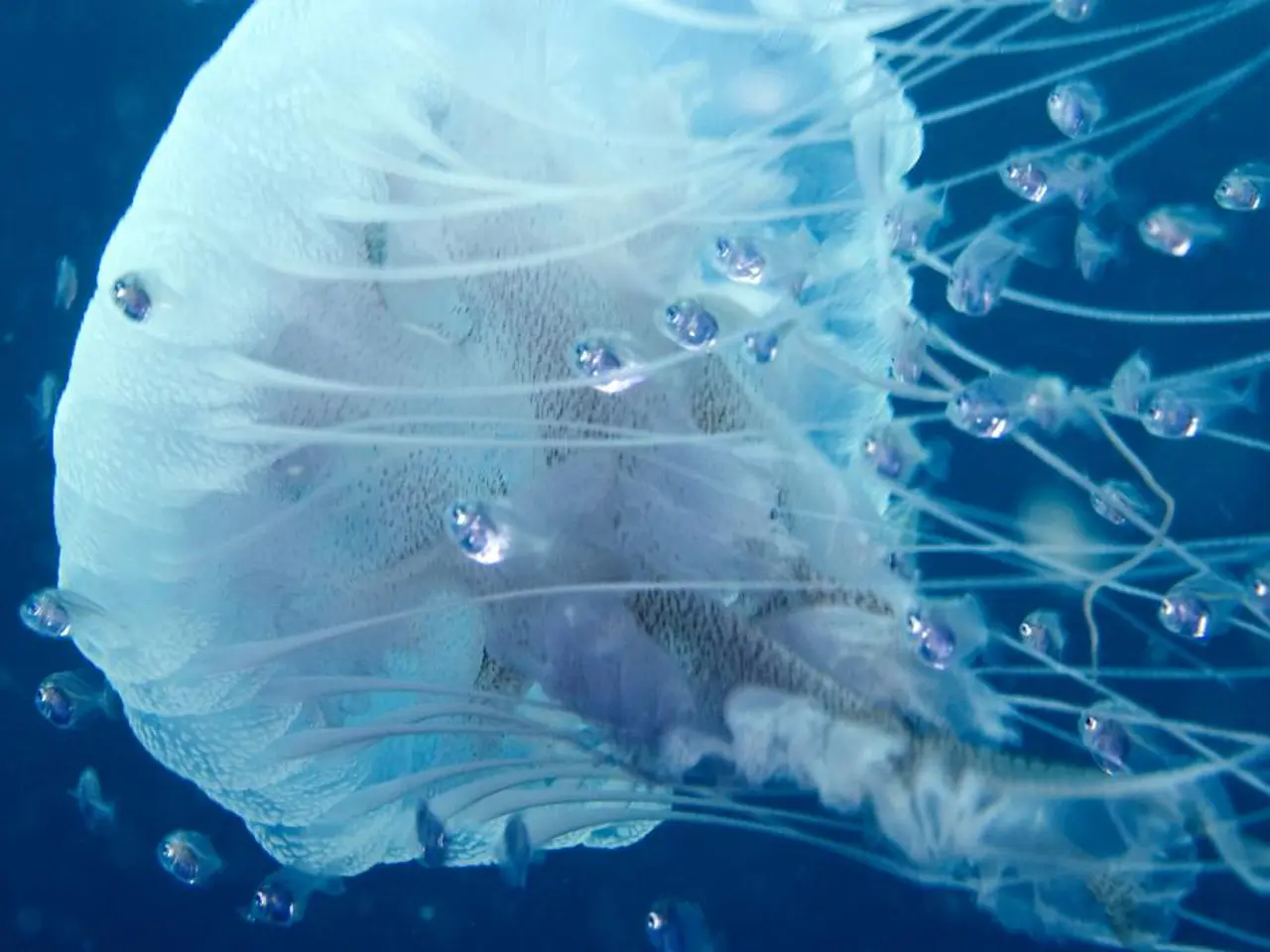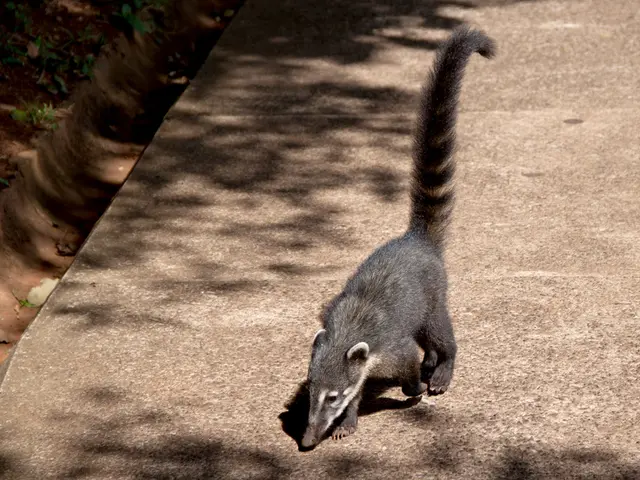Spacefish in Tiangong Space Station Adapt to Zero-Gravity Conditions
The Chinese Space Station, home to the recent Shenzhou 18 mission, is conducting groundbreaking experiments to study the effects of microgravity and radiation on zebrafish. This mission, a significant step in planetary science, aims to shed light on the impact of these factors on biological processes, particularly in the areas of development, gene expression, bone formation, and immune function.
Zebrafish, chosen for their genetic similarity to humans and transparent embryos, are often used as model organisms for studying vertebrate biology in space. However, as of August 2025, published results from China's Tiangong space station experiments on zebrafish remain limited or unpublished in public search results.
The Shenzhou 18 mission, a Chinese manned space mission, intentionally selected zebrafish due to their short reproductive cycle, transparent eggs, and genetic similarity to humans. Unlike previous missions, Shenzhou 18 does not plan to return the fish to Earth but aims to keep them alive on board the station and build an ecosystem around them. The goal is to create an autonomous ecosystem and study its evolution under microgravity and radiation.
Upon arrival on the space station, the zebrafish exhibited unusual swimming patterns, suggesting they were disoriented. Previous studies have already observed a decreased bone density in fish ten days after their arrival in orbit, a phenomenon also observed in humans. Fortunately, the fish have since returned to a normal rhythm and appear to be doing well.
Four zebrafish and a batch of submerged hornworts were sent to the Chinese Space Station during Shenzhou 18. Taikonauts, the Chinese astronauts, are responsible for feeding the animals, monitoring them with cameras, and collecting water at regular intervals.
For those seeking the most precise details on this experiment, it is recommended to look directly for recent academic papers or official releases from the China Manned Space Agency or the Chinese Academy of Sciences focusing on these experiments.
- The study of zebrafish in space, part of the Shenzhou 18 mission on the Chinese Space Station, extends beyond understanding microgravity and radiation's effects on biological processes; it also aims to create an autonomous ecosystem within the space station, offering new insights into the evolution of life in space.
- The decision to keep the zebrafish alive on board the Chinese Space Station during Shenzhou 18, rather than returning them to Earth, offers an opportunity to explore health-and-wellness aspects, such as the long-term effects of microgravity and radiation on a complete life cycle, including gene expression, immune function, and more.
- The addition of hornworts to the Shenzhou 18 experiments on the Chinese Space Station serves two purposes: providing an essential part of the developing zebrafish's environment and contributing to research on the response of terrestrial plants in space, playing a crucial role in understanding the impact of microgravity, radiation, and climate changes on Earth's environment.






